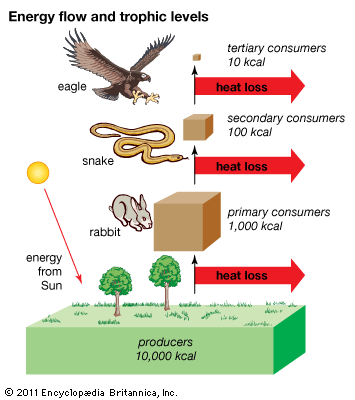According to the law of conservation of matter, matter is never created or destroyed. Yet in a food pyramid the amount of biomass decreases as we move up through the pyramid, from producers to top level consumers. Why?
1 Answer
The missing mass is the carbon dioxide and water released as by products of metabolism.
Explanation:
Each level of the food pyramid uses energy for metabolism necessary for life. The process of metabolism uses mass by burning glucose and other organic molecules to produce energy. Carbon Dioxide and Water are by products of the oxidation of the sugars, proteins and fats used for energy.
The first law of energy is that energy and matter can neither be created nor destroyed. What is happening here is the second law of thermodynamics. The second law says that energy always moves from a high useable level of energy to lower less useable forms of energy. The food used by organisms has a high level of useable mass and energy. When the food is burned the mass and energy is at much lower level of useable energy and mass. The mass released as Carbon Dioxide and Water are lost to the food pyramid.
Each level of the food pyramid uses 90% of the useable energy and mass it absorbs to maintain its own metabolism. There is only 10% of the useable mass and energy left to pass on next level of of the food pyramid. This is in accordance of the second law of Thermodynamics, not the first.

You may be interested in these related Socratic questions:
How does energy flow through an ecosystem?
How is a food chain related to energy flow within an ecosystem?
Can you describe the efficiency of energy transfer between trophic levels?

